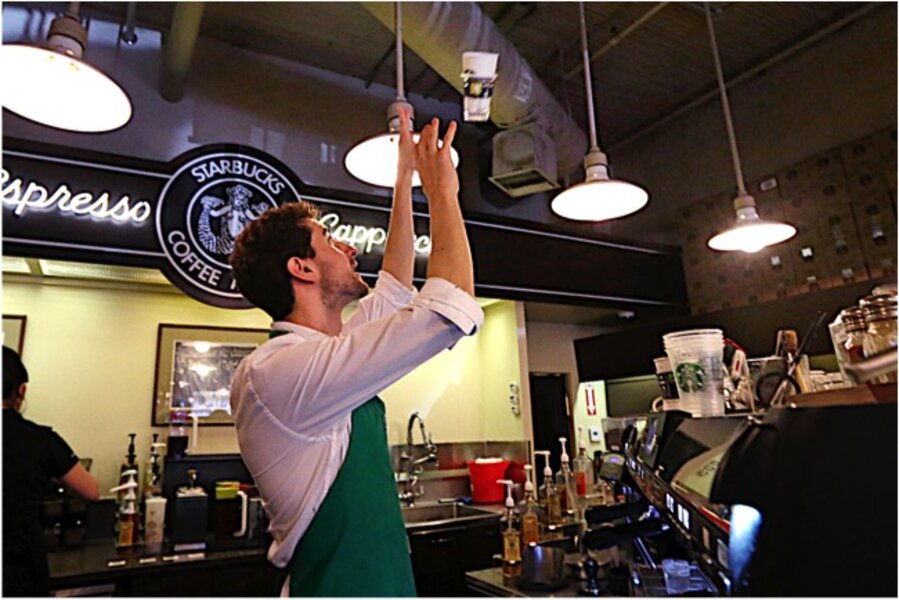Starbucks office delivery: Just another way to keep workers at their desks?
Loading...
Starbucks began a pilot program for in-office coffee delivery Tuesday, which has the potential to change the essence of workplace coffee culture.
The delivery program serves only offices in New York City's Empire State Building for now. The business model is customized for what Starbucks chief digital officer Adam Brotman described as "dense, urban environments like office buildings," reported USA Today.
The pilot program is called Green Apron Delivery and answers demand from social media, official feedback sites, and casual conversation, according to a news release. The Starbucks coffee baristas will monitor online orders and make the coffee from specially designed Starbucks locations inside the Empire State Building itself. They will coordinate orders so the beverages stay hot and bring them to a pre-determined location, probably the waiting room or reception area nearest the customer.
The presence of green-aproned Starbucks partners in the office could represent a shift in its purpose, as the venue of coffee ordering and pick-up constitutes part of its charm. Tom Hanks told Meg Ryan about the purpose of Starbucks in the 1998 rom-com, "You've Got Mail":
"The whole purpose of places like Starbucks is for people with no decision-making ability whatsoever to make six decisions just to buy one cup of coffee. Short, tall, light, dark, caf, decaf, low-fat, non-fat, etc. So people who don't know what the hell they're doing or who on earth they are can, for only $2.95, get not just a cup of coffee but an absolutely defining sense of self: Tall. Decaf. Cappuccino."
That was 1998, though, and an "absolutely defining sense of self" costs more than $2.95 now. This delivery service will cost Starbucks-lovers exactly two dollars more, on top of whatever their six-step, self-defining coffee choice costs in 2015.
Another cost may not yet have been counted. The story goes that Howard Schultz, the Starbucks chairman and chief executive officer, became enchanted with coffee bar culture during a visit to Italy and wanted to bring coffeehouses with "a feeling of connection" back across the pond. The goal, according to the Starbucks website, was to create "a place for conversation and a sense of community. A third place between work and home."
What happens when that "third place" moves closer to the office desk than the water cooler?
"With Starbucks Green Apron Delivery, we’ve simply moved that moment of connection between our customer and the barista from our place to theirs," Starbucks executive Cliff Burrows said in a release.
The traditional Starbucks venues are still very much in business, of course, and office coffee runs for take-out have been going on for years, but the coffee experience may be different if the transaction takes place beside a fake office plant rather than an iconic green mermaid.
"Starbucks Green Apron Delivery is an extension of our third place experience for our customers – giving them another option, in addition to our other store formats, that meets them where they are in their day," a Starbucks spokesperson tells The Christian Science Monitor.






